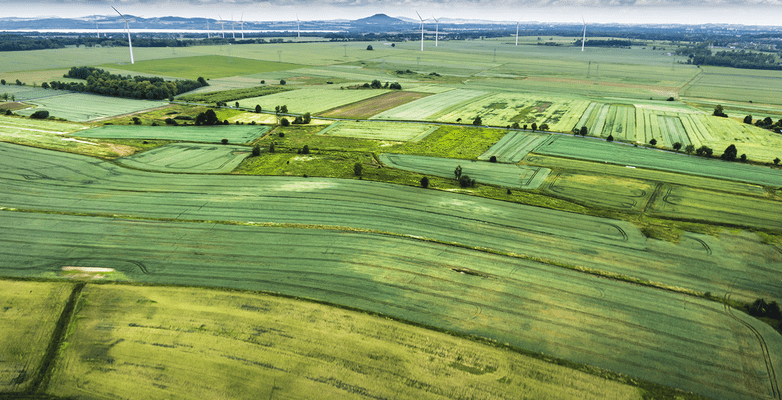
100% Committed Clean Electricity Roadmap
MAKE YOUR COMMUNITY OR BUSINESS 100% COMMITTED
Join the communities, businesses, and schools worldwide taking action on climate change and becoming 100% Committed to clean energy.
THE FUTURE IS CLEAN: 100% COMMITTED
Today, the good news is that communities, businesses, and schools of all sizes are taking their future into their own hands. They’re moving away from the dirty fossil fuels driving climate change and committing to shift to 100% clean energy.
You can too. Join Climate Reality’s 100% Committed campaign and pledge to help your business, community, or school shift to 100% clean energy.
Making the shift to 100% clean energy is easier than you think, and we’re here to help.
Plus, switching to clean energy isn’t just about cutting emissions and stopping global warming. It’s also about creating good green jobs and healthier communities to live, work, and play.
100% COMMITTED BUSINESSES
- Stand apart with a reputation for innovation, values-driven operations, and forward-looking leadership.
- Align themselves with the core values and personal principles of growing numbers of consumers, fostering strong brand loyalty, expanding revenue opportunities, and turning customers into passionate advocates.
- Save money on energy costs by hedging against volatile fuel prices.
100% COMMITTED COMMUNITIES
- Create rewarding, high-paying jobs and drive economic growth.
- Create healthier and happier places to live and work, with a decreased chance of bad air days and a reduced impact on our climate.
- Become known as exciting, forward-looking places to live and work, attracting in-demand businesses and workers and building thriving 21st-century economies.
WHO'S ALREADY MADE THE TRANSITION?
City of Aspen: For years, Aspen, Colorado has been known for the cultural events, food, music and more that call the city home. Now, add clean energy to that list. In 2015, Aspen made a complete transition to 100% clean energy. The city of over 6,600 accomplished this feat through a combination of a bond-funded hydropower project, power purchase agreements for wind and hydropower, and smaller amounts of energy from solar and landfill gas. Aspen officials reported that they’ve already seen the benefits in the form of “reductions in [greenhouse gas] emissions, low and stable electricity rates for our customers, and setting an example for other communities to follow suit and do right by the environment.” Ready to join 100% Committed and begin creating your own roadmap to 100-percent clean energy? Get in touch and let’s start the conversation.

- Step up to the plate: Contact The Climate Reality Project and sign a commitment to transition your community, business, or school’s total annual electricity use to clean sources like wind or solar by 2030 (or even sooner).
- Create a plan: Making the shift to 100% clean energy is easier than ever, but it’ll still take some planning. Talk to us and we can help you create an action plan for how to create a practical plan for your unique situation. (In order to be a 100% Committed partner, we’ll need to make sure the plan connects with our commitment to clean energy.)
- Speak up: Monitor and report on your progress – both to Climate Reality and in the media. After all, you’re doing great work – and we want the world to know.
There are many ways for 100% Committed partners to meet their commitments, but knowing what exactly counts as clean energy and the best way to move forward can be a little confusing at first.
The guidelines and best practices below can help you develop a plan that works for you and move forward.
WHAT COUNTS AS CLEAN ENERGY?
- Make smart decisions: 100% Committed partners can meet their 100% clean energy commitment with any of the following options, either on their own or in combination:
- Generating power on-site with clean sources including – but not limited to – wind, solar, and geothermal.
- Utility green-marketing products, like power purchase agreements with clean energy suppliers.
- Utility green-pricing products, like clean power options administered by utilities.
- Renewable energy certificates
- Choose the right sources: In accordance with the US Environmental Protection Agency (EPA) Green Power Partnership guidelines, partners must source their electricity from new clean energy facilities brought on line within the last 15 years (subject to a few exceptions).
- Think big-picture: Whatever option(s) work for you, make sure your clean energy project(s) don’t have negative impacts on the local environment or community. We encourage 100% Committed partners to get in touch with their local communities to discuss electricity transitions and what would work best for everyone involved. The transition to clean energy cannot just reproduce the inequities and injustice of fossil fuels.
- Think global and act (very) local: We strongly encourage 100% Committed partners to incorporate on-site power generation as part of their action plans, whenever possible. Generating your own power gives you long-term control over costs, while sending a strong visual statement to your customers or community about your values and commitment to addressing climate change.
WHAT DOES YOUR COMMITMENT COVER?
- You define where: As a 100% Committed partner, your commitment covers the town, community, campus, building structure(s), or operational or property limits as you define them.
- Multiple-choice options: If you have multiple properties or entities, we can only list those powered by 100% clean energy as 100% Committed partners. (For example, if a national retailer called Slope Sports joins 100% Committed, but is only able to power its Denver location.)
PICK A TARGET DATE
- Choose what works for you: Set a date for reaching 100% clean energy by 2030 or as soon as possible. Not sure how? Talk to us here at Climate Reality or a clean energy expert and learn more about the steps in your plan and the timeframes involved for each. That way, when you set a date, you’ll be sure to get there
FORM A COMMITTEE AND HIRE AN EXPERT
- There are many ways to get there: Every 100% Committed partner is different and there’s no one-size-fits-all plan for achieving 100% clean energy.
- Work together: Forming a committee of people inside your organization or within your local community to lead the process can bring diverse perspectives together to help see the challenges ahead and ensure everyone’s onboard inside your organization or within your local community to lead the process can bring diverse perspectives together to help see the challenges ahead and ensure everyone’s on board.
- Partner with a pro: Hiring an expert consultant to advise you throughout the planning and implementation processes can help you make smart decisions at every turn and set yourself up for long-term success.
RESOURCES
- No need to go it alone: There are many great resources out there to help you shift to clean electricity.
- Check the map: EPA’s Green Power Map can help you find REC providers, utility green pricing product providers, utility green-marketing product providers, and on-site clean energy generation providers in your state.
- Great businesses think alike: The Sustainability Roundtable advises member businesses on clean energy procurement strategies and processes.
- Ski resorts unite: For ski areas, the National Ski Areas Association’s Sustainable Slopes grant program provides cash and in-kind funding to support sustainability projects — such as clean energy installations — to members.
When you join 100% Committed, you’re standing up for the values you believe in and the planet we share. You’re setting a model for communities, businesses, and organizations around the world to follow.
SPREAD THE WORD.
- Get loud: Once you’ve signed up with 100% Committed and created an action plan, let your community of customers, students, residents, members, or colleagues know. Celebrate your commitment to clean energy and climate action in your social media and marketing. Because when word gets out, more and more people will want to be part of your success.
- We can help: Talk to us at Climate Reality about how we can help spread the word about your great work as a 100% Committed partner to millions of climate-conscious individuals worldwide. A list of opportunities will be detailed in your signed agreement.
- Keep the conversation going: Share reports on your progress with Climate Reality and share details in social media updates to your community. When the world sees and hears about the real, verifiable progress you’re making, others will want to follow your lead.
ACCEPTABLE CLEAN POWER RESOURCES AND PROCUREMENT OPTIONS
100% Committed partners have broad discretion in choosing how to meet their clean energy commitments. We know that it’s important to find solutions that work for you and to choose solutions that follow established guidelines and best practices recognized by the business and environmental community.
To help you through this process and ensure all 100% Committed partners choose clean energy solutions that meet these standards, we’ve provided some requirements and considerations in this document to assist in understanding and selecting the resources and procurement options available
The requirements outlined below draw on the US EPA’s Green Power Partnership Program and we generally (though not in all cases) defer to its guidelines for questions that are not covered in this document. However, please note that our requirements differ in some key respects (particularly with regards to biomass).
KEY CONSIDERATIONS FOR ALL CLEAN ENERGY PROJECTS
- Make smart decisions: 100% Committed partners can meet their 100% clean energy commitment with any of the following options, either on their own or in combination:
- Whatever forms of clean energy are chosen, 100% Committed partners must take care to ensure that:
- Electricity projects selected result in zero greenhouse gas emissions (or very close thereto).
- The selected projects do not have serious and disproportionate negative impacts on local communities and have free, prior, and informed consent before pursing new installations.
- Environmental disruption and harm are minimized to the greatest extent possible and installation sites do not result in significant disruption of habitat or the surrounding ecosystem.
- The technology is safe and does not have the potential for catastrophic human damage.
- Technologies align with the goal of limiting warming to 1.5 degrees Celsius above pre-industrial levels as outlined by the International Panel on Climate Change.
- Emerging technologies that prove to have zero or net-zero GHG emissions and meet the other criteria can be included in your energy portfolio.
- We encourage partners to consult local communities to ensure that the projects chosen for inclusion within the partner’s total electricity portfolio have the support of the local community. Partners should also review the environmental impact statements of the selected projects.
- Whatever forms of clean energy are chosen, 100% Committed partners must take care to ensure that:
WHAT SOURCES ARE ACCEPTABLE?
- With the above key considerations in mind, below is a list of acceptable clean energy resources.
- Clean Energy
- Wind energy
- Solar and solar thermal energy
- Kinetic energy of moving water, including:
- Waves.
- Tides.
- Currents.
- Energy derived from the conversion of ocean thermal gradients.
- Pumped storage facilities.
- Water released through a dam.
- Climate Reality does not endorse new, large-scale developments of hydropower greater than 50 MW in size. We only support hydro projects that do not significantly disrupt natural processes or local ecologies. This can include adding incremental capacity to existing dams, run-of-river hydropower facilities certified as low-impact, and conduit facilities. Existing large hydropower facilities may be exempted from restrictions and accepted into our campaign at our discretion.
- Geothermal energy.
- Biomass energy from any organic matter not derived from fossil fuels that:
- Can be converted to useable fuel for the production of energy.
- Does not limit supply or raise costs of staple food sources.
- Is not sourced from feedstocks that are contaminated or result in the emission of hazardous compounds or harmful local air pollutants.
- Utilizes generation facilities and operations that have already gained free, prior, and informed consent from surrounding communities.
- Replenishes over a time scale that is consistent with limiting the global temperature rise to 1.5 degrees Celsius by 2050 as prescribed by the IPCC’s Sixth Assessment Report.
- Has feedstocks that are certified as sustainably managed from a credible certification body and are not invasive or noxious species of plants.
- Energy storage technologies.
- We consider energy storage to be acceptable under the campaign only if the electricity meets the tenets outlined in this document.
- Hydrogen.
- Only acceptable if manufacture is driven solely by clean generation according to the standards outlined here.
- Any emerging technology that proves to be fully clean with zero or net-zero carbon emissions and that meet all other criteria of our program.
- Nuclear Energy
- Nuclear energy is a low-emission form of electricity generation. While there are drawbacks, The Climate Reality Project will still accept some nuclear generation under the campaign at our discretion. New nuclear technologies will be evaluated based on their emissions and drawbacks as they become economically viable sources of electricity generation.
- Acceptable Market-Based Solutions to Achieve 100%
- Renewable energy credits.
- Utility green tariffs.
- Feed-in tariffs.
- Energy tendering.
- Net metering.
- Investing directly in distributed systems.
- Taxation structures that incentivize use of clean energy (provided they are not regressive and do not disproportionally affect vulnerable communities).
- Any other credible clean power procurement option not listed here.
- Clean Energy
WHAT SOURCES ARE NOT ACCEPTABLE?
- In order to accelerate the movement towards a clean energy economy, The Climate Reality Project explicitly will not accept projects from the following sources:
- Coal-fired generation, including so-called “clean coal.”
- Natural gas.
- Petroleum/oil.
- Fossil fuel-based generation that includes carbon capture and storage.
- Carbon capture and storage has not yet been proven viable in terms of cost-effectiveness and carbon neutrality to allow for any type of fossil fuel generation that would be considered acceptable under our campaign. We recognize that this technology continues to evolve, and will evaluate it if it becomes economically feasible.
HOW CAN PARTNERS MEET THEIR CLEAN ENERGY PROCUREMENT REQUIREMENTS?
- Per our 100% Committed Clean energy Roadmap, partners can meet their clean energy commitments with any of the following tools, either on their own or in combination:
- Generating power on-site with clean sources.
- Utility green-marketing products, like power purchase agreements with clean energy suppliers.
- Utility green-pricing products, like clean power options administered by utilities.
- Certified renewable energy certificates (RECs).
- Any other credible clean power procurement option not covered here.
REMINDERS AND OTHER THINGS TO KEEP IN MIND
- Per our 100% Committed Clean Energy Roadmap, below are a few additional things to keep in mind when devising action plans:
- In accordance with the US EPA’s Green Power Partnership guidelines, partners must source their electricity from new clean energy facilities brought on line within the last 15 years. The reason for this is to encourage new development of clean energy projects. The Climate Reality Project believes that a facility can be exempt from this requirement in some conditions, including if:
- The facility has been re-powered on or after the 15-year new date such that 80% of the fair market value of the project stems from new generation equipment installed as part of the re-powering.
- A separable improvement to or a complete improvement of an existing operating facility provides incremental generation that is separately metered from the existing generation at the facility. In addition, if the incremental generation is sold as a green power market product, then it must be contractually available for sale.
- A facility that is a separately metered landfill gas resource that was not used to generate electricity before the 15-year new date.
- The Climate Reality Project strongly encourages partners to incorporate on-site power generation as part of their action plans, whenever possible. Generating power on site provides long-term control over costs, while sending a strong visual statement to a partner’s customers or community about their values and commitment to addressing climate change.
- In accordance with the US EPA’s Green Power Partnership guidelines, partners must source their electricity from new clean energy facilities brought on line within the last 15 years. The reason for this is to encourage new development of clean energy projects. The Climate Reality Project believes that a facility can be exempt from this requirement in some conditions, including if:

